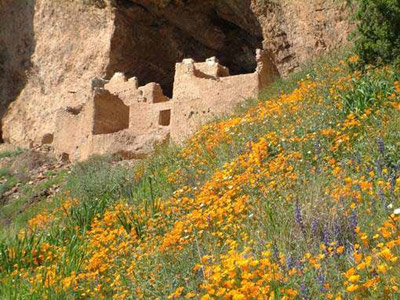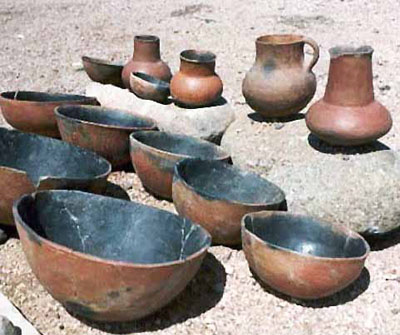The Salado began migrating out of the Tonto Basin after A.D. 1350, and by A.D. 1450, the Salado inhabitants of the region had moved on to other places.

NPS
Some archeologists suggest that the preceding years of drought and flood cycles and salinization of the fields collapsed the agricultural systems and alliances of the Salado people (e.g. Reid and Whittlesey 1997). Others, including Glen Rice think conflict and warfare provided the impetus for emigration. Archeologists are also not sure where the Salado people went when they left the Tonto Basin. Native American oral traditions indicate that some Salado people moved north and east to the Hopi and Zuni pueblos, west into the lower Salt River Valley, and south into to the Rio Grande and into northern Mexico. Just as the development of the local Salado culture in the Tonto Basin and the regional Salado Phenomenon remain a mystery, so too do the reasons for the disappearance of Salado iconography and the Salado way of life in the Southwest.
Literature Cited

NPS
Clarke, Jeffery J.
2001 Tracking Prehistoric Migrations: Pueblo Settlers Among the Tonto Basin Hohokam. Anthropological Papers of the University of Arizona, No. 65. Tucson.
Crown, Patrica
1994 Ceramics and Ideology: Salado Polychrom Pottery. University of New Mexico Press, Albuquerque.
Dean, Jeffery (editor)
2000 Salado. University of New Mexico Press, Albuquerque.
Elson, Mark D.
1996 A Revised Chronology and Phase Sequence for the Lower Tonto Basin of Central Arizona. Kiva 62(2):117- 147.
Gladwin, Harold S.
1957 A History of the Ancient Southwest. Bond-Wheelwright, Portland.
Gladwin, Winifred, and Harold S. Gladwin
1930 Some Southwestern Pottery Types: Series I. Medallion Papers No. 8. Gila Pueblo, Globe.
Houk, Rose
1992 Salado: Prehistoric Cultures of the Southwest. Southwest Parks and Monuments Association, Tucson.
Lyons, Patrick D. and Alexander J. Lindsay Jr.
2006 Perforated Plates and the Salado Phenomenon. Kiva 72(1):5-54.
Reid, J. Jefferson, and Stephanie Whittlesey
1997 The Salado. In The Archaeology of Ancient Arizona, by J.J. Reid and S. Whittlesey, pp 230-258. University of Arizona Press, Tucson.
Simon, Arleyn W., James H. Burton, and David R. Abbott
1998 Intraregional Connections in the Development and Distribution of Salado Polychromes in Central Arizona. Journal of Anthropological Research 54(4):519-547.
Prepared by Catherine Daquila and Duane Hubbard, 2008.
Part of a series of articles titled Salado Overview.
Previous: The Spread of Salado Iconography
Last updated: August 14, 2017
